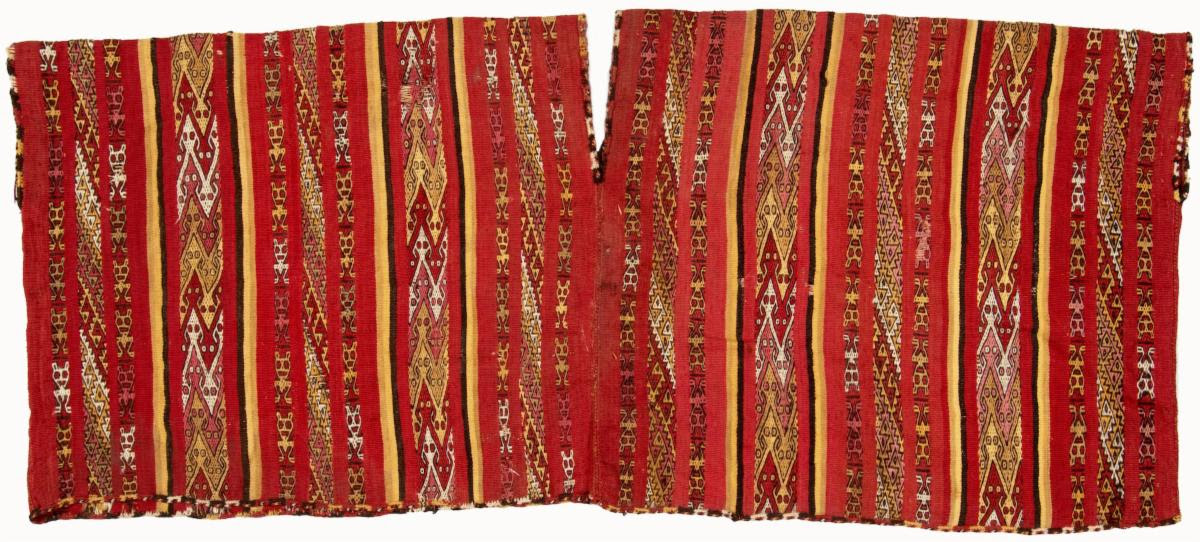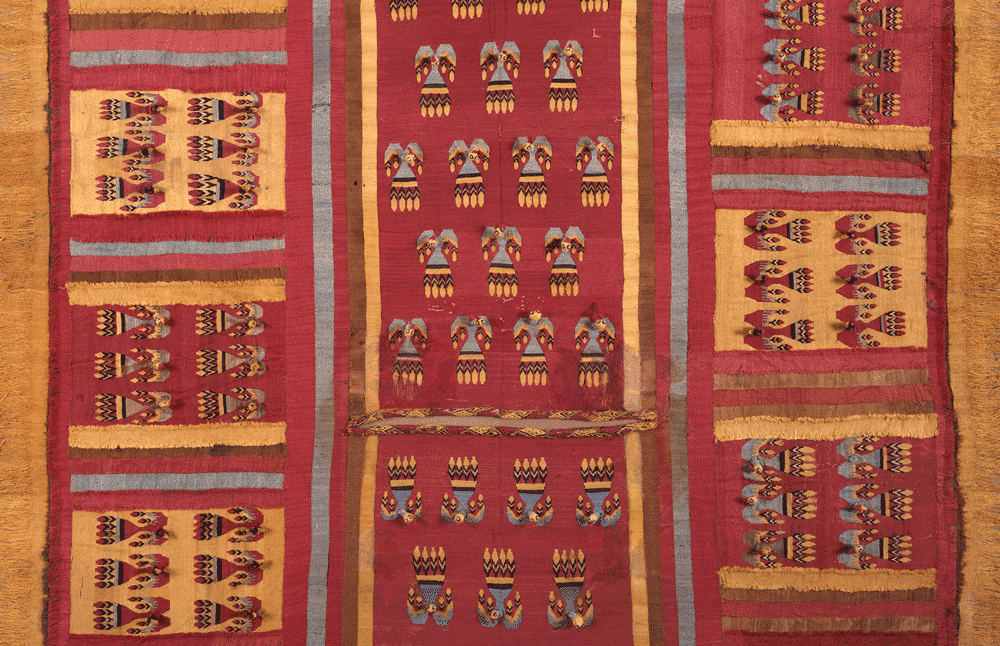|
Tupu Pins
Worn for over 1700 years throughout the Andean regions of South America, tupu pins were worn primarily by women. Background Due to their longevity, tupu pins are not isolated to a single region of South America. Rather, their longevity and dispersion has allowed for tupu pins to be examined as products of their environment that evolved with their surroundings. Tupu pins can be identified by their unique shape which are made by hammering the selected metal to form the head and stem of the pin. The stem is long and sharp, made to be pierced through a traditional dress called an acsu with the aim of holding the fabric together at the front. The head of the pin is much flatter and is usually round or oval and often decorated with insignia or gems. The head may have a small hole that connects a string to the tupu pin to assure it will not get lost. Status Practically used as a garment fastener and sometimes worn in pairs, the tupu pin also holds significant cultural importance. Cl ... [...More Info...] [...Related Items...] OR: [Wikipedia] [Google] [Baidu] |
Andean Civilizations
The Andean civilizations were civilization, complex societies of many Indigenous peoples of South America, cultures and peoples mainly developed in the river valleys of the coastal deserts of Peru. They stretched from the Andes of southern Colombia southward down the Andes to Chile and northwest Argentina. Archaeologists believe that Andean civilizations first developed on the narrow coastal plain of the Pacific Ocean. The Norte Chico civilization, Caral or Norte Chico civilization of Peru is the oldest known civilization in the Americas, dating back to 3200 BCE. Despite severe environmental challenges, the Andean civilizations domesticated a wide variety of crops, some of which became of worldwide importance. The Andean civilizations were also noteworthy for monumental architecture, textile weaving, and many unique characteristics of the societies they created. Less than a century prior to the arrival of the Spanish Empire, Spanish conquerors, the Inca Empire, Incas, from their ... [...More Info...] [...Related Items...] OR: [Wikipedia] [Google] [Baidu] |
Tupu MET DP-13440-015
* , Incan unit of length
{{dab ...
Tupu may refer to: People * Lani Tupu, New Zealand actor * Tania Tupu (born 1973), New Zealand basketball player * Tupu Atanatiu Taingakawa Te Waharoa (1844–1929), New Zealand tribal leader * Tupu Ulufale (born 1987), Samoan rugby league football player Other * Tupu (TV series) ''Tupu'' is a 2D animated television series, developed by the French animation studio Xilam, directed by Xavier Giacometti, featuring the adventures of the fictional New York mayor's son, Norton, with a redheaded girl named Tupu in New York, fo ... [...More Info...] [...Related Items...] OR: [Wikipedia] [Google] [Baidu] |
South America
South America is a continent entirely in the Western Hemisphere and mostly in the Southern Hemisphere, with a relatively small portion in the Northern Hemisphere at the northern tip of the continent. It can also be described as the southern subregion of a single continent called America. South America is bordered on the west by the Pacific Ocean and on the north and east by the Atlantic Ocean; North America and the Caribbean Sea lie to the northwest. The continent generally includes twelve sovereign states: Argentina, Bolivia, Brazil, Chile, Colombia, Ecuador, Guyana, Paraguay, Peru, Suriname, Uruguay, and Venezuela; two dependent territories: the Falkland Islands and South Georgia and the South Sandwich Islands; and one internal territory: French Guiana. In addition, the ABC islands of the Kingdom of the Netherlands, Ascension Island (dependency of Saint Helena, Ascension and Tristan da Cunha, a British Overseas Territory), Bouvet Island ( dependency of Norway), Pa ... [...More Info...] [...Related Items...] OR: [Wikipedia] [Google] [Baidu] |
Andean Textiles
The Andean textile tradition once spanned from the Pre-Columbian to the Colonial era throughout the western coast of South America, but was mainly concentrated in Peru. The arid desert conditions along the coast of Peru have allowed for the preservation of these dyed textiles, which can date to 6000 years old. Many of the surviving textile samples were from funerary bundles, however, these textiles also encompassed a variety of functions. These functions included the use of woven textiles for ceremonial clothing or cloth armorLechtman, Heather. "Technologies of Power: The Andean Case." In ''Configurations of Power: Holistic Anthropology in Theory and Practice'', ed. John S. Henderson and Patricia J. Netherly, 254. Ithaca, NY: Cornell University Press, 1993. as well as knotted fibers for record-keeping. The textile arts were instrumental in political negotiations, and were used as diplomatic tools that were exchanged between groups. Textiles were also used to communicate wealth, ... [...More Info...] [...Related Items...] OR: [Wikipedia] [Google] [Baidu] |
Andean Spindle
The Andes, Andes Mountains or Andean Mountains (; ) are the longest continental mountain range in the world, forming a continuous highland along the western edge of South America. The range is long, wide (widest between 18°S – 20°S latitude), and has an average height of about . The Andes extend from north to south through seven South American countries: Venezuela, Colombia, Ecuador, Peru, Bolivia, Chile, and Argentina. Along their length, the Andes are split into several ranges, separated by intermediate depressions. The Andes are the location of several high plateaus—some of which host major cities such as Quito, Bogotá, Cali, Arequipa, Medellín, Bucaramanga, Sucre, Mérida, El Alto and La Paz. The Altiplano plateau is the world's second-highest after the Tibetan plateau. These ranges are in turn grouped into three major divisions based on climate: the Tropical Andes, the Dry Andes, and the Wet Andes. The Andes Mountains are the highest mountain range outs ... [...More Info...] [...Related Items...] OR: [Wikipedia] [Google] [Baidu] |




.jpg)